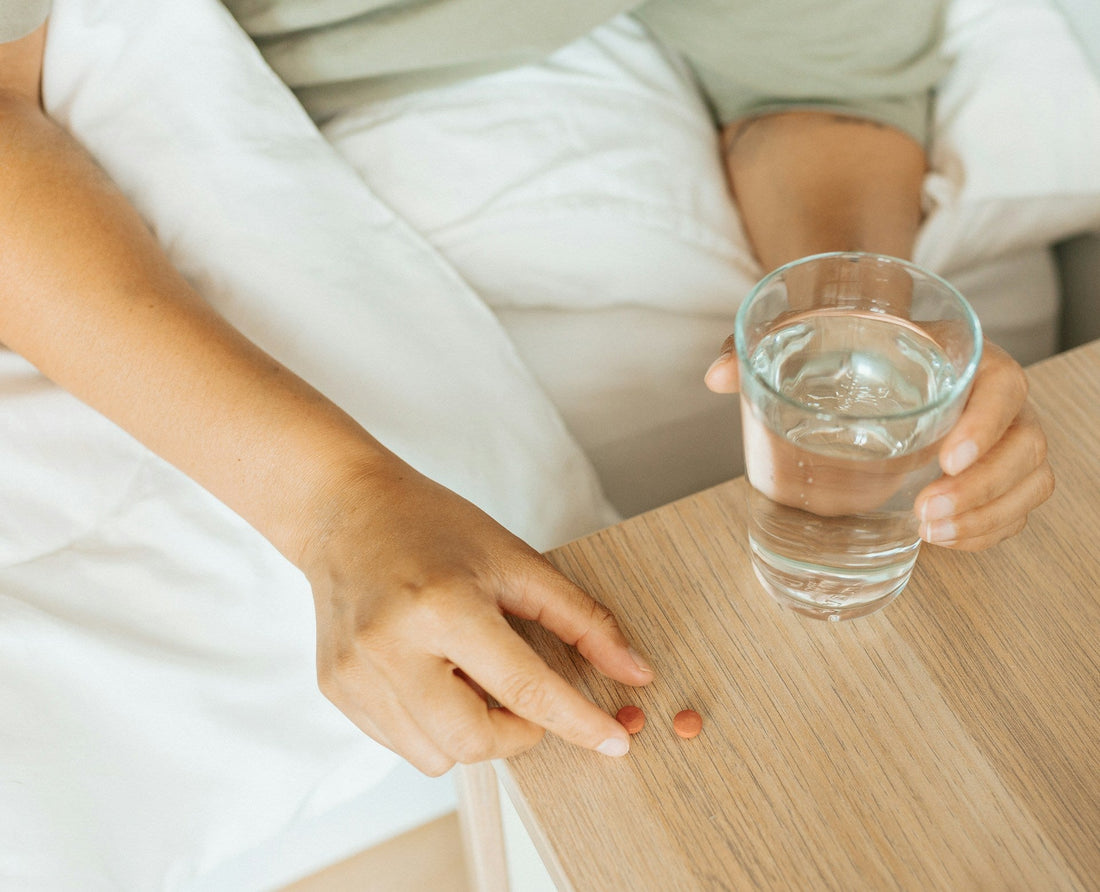
Is Banding Hemorrhoids Painful? Understanding the Procedure and Recovery
Share
If you're considering hemorrhoid banding, you likely want to know how painful the process is. While many individuals report discomfort during the procedure, it is generally considered manageable and brief. Understanding the expectations around pain can help alleviate anxiety and prepare you for recovery.
Hemorrhoids can cause significant discomfort, leading people to explore various treatment options. Hemorrhoid banding, a common outpatient procedure, is designed to reduce symptoms effectively. Throughout the process, you may experience some pain, but numerous patients find that the long-term benefits outweigh the temporary discomfort.
For those struggling with hemorrhoid-related pain, supplements like Hem Healer can offer additional support. This 100% natural blend of botanical herbs is specifically formulated to reduce pain, swelling, and bleeding associated with hemorrhoids, making it an excellent choice for both men and women. By combining effective medical procedures with natural remedies, you can take a comprehensive approach to managing your condition.
Understanding Hemorrhoids
Hemorrhoids are swollen veins that develop in the anal canal and lower rectum. Understanding their types and symptoms can help you determine the appropriate steps for management and treatment.
Identifying Hemorrhoid Types
There are two primary types of hemorrhoids: internal and external.
-
Internal hemorrhoids occur inside the anal canal. They are usually painless but may bleed during bowel movements. When they prolapse, they can become visible outside.
-
External hemorrhoids form under the skin around the anus. These can be itchy and painful and may clot, forming a thrombosed hemorrhoid, which is extremely uncomfortable.
You can often differentiate between the two types based on their location and the symptoms they present. Being familiar with these types can help in identifying the proper treatment.
Recognizing Hemorrhoid Symptoms
Symptoms of hemorrhoids can vary based on their type. Common signs include:
- Bleeding: Bright red blood on toilet paper or in the toilet bowl.
- Pain and discomfort: Especially with external hemorrhoids.
- Swelling: Around the anal area, particularly for external hemorrhoids.
- Itching: Caused by irritation in the anal canal from swollen tissues.
If you experience these symptoms frequently, it may indicate the need for treatment. Hem Healer offers a 100% natural blend of botanical herbs designed to help reduce pain, swelling, and bleeding associated with hemorrhoids. Our supplement is effective for both men and women, providing a holistic approach to managing symptoms.
Overview of Hemorrhoid Banding
Hemorrhoid banding, also known as rubber band ligation, is an effective non-surgical procedure used to treat symptomatic hemorrhoids. This method involves tying a rubber band around the base of the hemorrhoid to cut off its blood supply, causing it to shrink and eventually fall off.
The Banding Procedure
The banding procedure is typically performed as an outpatient procedure, allowing you to return home the same day. A doctor uses a device called a ligator, often guided by an anoscope, to place a small rubber band around the base of the hemorrhoid.
This process usually takes around 15 to 30 minutes. Most patients receive local anesthesia to minimize discomfort during the procedure. After banding, you may experience mild discomfort or cramping for a short time, but this is generally manageable.
Once the band is applied, the hemorrhoid will lose its blood supply, leading to its eventual disappearance within weeks. Many patients find this method effective for relieving painful symptoms associated with hemorrhoids.
Preparing for Rubber Band Ligation
Preparation for rubber band ligation is straightforward. Before the procedure, your healthcare provider may instruct you on dietary adjustments, such as increasing fiber intake and staying hydrated. This helps ensure your body is ready for the treatment and recovery.
On the day of the procedure, it’s important to arrive with a clear understanding of what to expect. Bring any necessary paperwork and be prepared to discuss your medical history. You may also need someone to drive you home post-procedure.
Consider using supplements like Hem Healer before and after the procedure. This 100% natural blend of botanical herbs can help reduce pain, swelling, bleeding, and the severity of hemorrhoids. Whether you are a man or woman, Hem Healer offers effective support for your recovery journey.
Pain and Discomfort During and After Banding
Experiencing pain and discomfort after hemorrhoid banding is common but varies among individuals. Understanding what to expect can help you prepare and manage your symptoms effectively.
Immediate Post-Procedural Pain Response
After the banding procedure, some level of discomfort is typical. You may feel a sensation of pressure in the rectal area. Some patients report mild to moderate pain that can last a few days. This discomfort may peak within the first 24 to 48 hours.
Pain management is crucial during this period. Over-the-counter medications like Tylenol are often recommended. Avoiding NSAIDs, such as ibuprofen, is usually advised. Along with medication, the application of a cold compress can reduce swelling and numb the area. It's also normal to experience a feeling of fullness or the need to have a bowel movement after the procedure.
Managing Pain at Home
Managing pain at home involves a blend of medication and lifestyle changes. A sitz bath, where you immerse your lower body in warm water, can provide significant relief. Aim for 15 to 20 minutes in the bath several times a day, especially after bowel movements.
Increasing dietary fiber can ease bowel movements and prevent straining. This can help minimize pain during recovery. Staying hydrated is equally essential for softer stools. For those seeking additional support, Hem Healer offers a natural blend of botanical herbs to reduce pain and swelling effectively. This supplement is designed for both men and women, helping to alleviate the discomfort associated with hemorrhoids.
Following these steps can maximize your comfort and promote a smoother recovery.
Potential Complications and Side Effects
When undergoing hemorrhoid banding, it’s essential to be aware of potential complications and side effects that can arise. Understanding these can help you identify any issues early and seek appropriate medical attention if needed.
Common Side Effects
After the banding procedure, some patients may experience mild side effects. Common symptoms include:
-
Discomfort: It's typical to feel some discomfort in the treated area. This may resemble a dull ache and can last for several days.
-
Bleeding: Light bleeding can occur after the procedure. If the bleeding is minimal and stops within a short time, it is generally not a cause for concern.
-
Swelling: Swelling around the site is common, as the body reacts to the procedure.
-
Pain: Some patients report mild to moderate pain, which can usually be managed with over-the-counter pain relievers.
If these symptoms persist or worsen, it’s crucial to consult your healthcare provider.
Signs of More Severe Complications
While rare, more severe complications can occur after hemorrhoid banding. Be vigilant for the following signs:
-
Severe Pain: If you experience intense pain that does not subside with medication, it might indicate a complication.
-
Signs of Infection: Fever, chills, and pus discharge from the banding site can suggest an infection requiring immediate attention.
-
Bleeding: Heavy bleeding or blood in your stools is concerning. This should prompt an urgent visit to your doctor.
-
Blood Clots: If you notice sudden swelling in your legs or feel a sharp pain, it could indicate a blood clot.
-
Recurring Hemorrhoids: It's possible for hemorrhoids to return after treatment. If you experience this, seek further evaluation.
For support and relief, consider using Hem Healer, a natural supplement designed to reduce pain and swelling associated with hemorrhoids.
Factors Affecting Hemorrhoids and Recovery
Your approach to managing hemorrhoids and the recovery process can be significantly influenced by lifestyle choices and aftercare practices. Adjusting certain habits can enhance healing and reduce discomfort.
Lifestyle and Diet
Diet plays a crucial role in the management and prevention of hemorrhoids. A diet low in fiber can lead to constipation, making bowel movements more challenging and painful. To alleviate these issues, ensure you consume plenty of high-fiber foods such as fruits, vegetables, and whole grains.
Adequate hydration is equally important. Drink sufficient water daily to prevent dehydration, which can exacerbate constipation. It's advisable to limit processed foods and refined sugars, as they can worsen bowel health.
Additionally, maintaining a healthy weight can reduce pressure on the rectal area, especially if you are overcoming obesity. Regular physical activity can aid digestion and promote healthy bowel movements, reducing the risk of hemorrhoids.
Recovery and Aftercare
Post-procedure recovery from hemorrhoid banding can vary based on several factors. Engaging in light activities can aid recovery while avoiding heavy lifting or strenuous exercise. Such actions can increase pressure on the abdomen and hinder healing.
Aftercare is essential for a smooth recovery. This includes using over-the-counter pain relievers as recommended and applying topical treatments to alleviate discomfort. Monitor your bowel movements carefully; straining can lead to complications.
Using a natural supplement like Hem Healer can also help. Our formulation is designed to reduce pain, swelling, and bleeding, supporting your recovery. Incorporating these practices ensures a more comfortable healing experience.

